Beef or Steak: What’s the Difference for Beginners?
Beef vs. steak often creates confusion among many food enthusiasts and home cooks alike.
The terms relate to different aspects of the same meat source but serve distinct culinary purposes.
The main difference lies in their specific cuts and preparation methods, which significantly affect taste and texture.
Every good chef knows that selecting the right option depends entirely on the dish being prepared.
Most restaurants offer both varieties on their menus, catering to different preferences and meal types.
People frequently debate which provides better flavor, though this largely comes down to personal taste and cooking skill.
You'll appreciate understanding these distinctions when planning your next special meal or barbecue gathering.
Ready to master the art of choosing between these delicious options?
Beef Insights Everyone Should Know
Meat from large bovines like cows and bulls is called beef, one of the world's most common protein sources today. Our ancestors once tracked these animals in the wild as hunters, but modern farms now raise them as livestock in many countries.
Along with pork and chicken, beef ranks among the top three meat choices for people everywhere, appearing on dinner tables from fast food restaurants to high-end steakhouses. The rich flavor and versatility of beef make it a go-to option for countless recipes across different cultures and cuisines.
Popular Types of Beef Cut
Beef lovers everywhere should know about these beef cuts and their uses in recipes. Read on to find out.
Flank
Flank is a thin, affordable cut from the cow’s lower abdomen, just below the loin and sirloin. Because this area gets a lot of exercise, flank meat has long, thick muscle fibers, making it one of the tougher cuts.
Despite its toughness, flank steak and skirt steak become delicious when grilled quickly over high heat, offering great flavor at a lower price.
Rib
Rib cuts come from the cow’s ribs and backbone, especially the last six pairs of ribs. Known for their rich marbling, rib cuts have abundant intramuscular fat, which adds tenderness and flavor.
This makes them a premium, pricier choice. Popular rib cuts include ribeye steak, ribeye filet, and back ribs. They are versatile and can be cooked by searing, grilling, or slow roasting.
Loin
Located just behind the ribs, the loin is prized for its tenderness and flavor. It’s divided into the sirloin and short loin sections. Sirloin cuts, such as tri-tip, top sirloin, and bottom sirloin, are slightly tougher but perfect for grilling or stir-frying.
The short loin offers premium cuts like filet mignon, T-bone, tenderloin, and strip loin, known for their melt-in-your-mouth tenderness and rich taste.
What is Steak?
Steak is a cut of meat, typically beef, that is sliced perpendicular to the muscle fibers. It comes from various parts of the animal, each offering different textures and flavors.
Steak is prized for its tenderness and rich taste, and it can be prepared using a variety of cooking methods such as grilling, pan-searing, broiling, or roasting.
Depending on the cut and cooking style, steaks can range from lean and tender to richly marbled and flavorful, making them a popular choice for meat lovers worldwide.
Types of Steak
There are many types of steaks beyond what you might expect, and confusing them can lead to cooking mistakes. Here’s a quick guide to different steak types:
Beef
Beef steaks come from various parts of the cow and include a range of tenderness. Cuts like tenderloin, top sirloin, and T-bone are tender, while chuck or round steaks are tougher.
Beef steaks can be cooked to various doneness levels, from rare to well done.
Pork
Pork steaks, usually cut from the shoulder, are also popular and can be tender and juicy.
Because shoulder muscles are tougher, pork steaks often require longer cooking times than beef.
Popular recipes include grilled pork steak, garlic butter baked pork steak, and creamy garlic pork steak.
Fish
Fish steaks are cut perpendicular to the spine and can be cooked faster than fillets. Common fish steaks include tuna, mahi-mahi, and swordfish.
Fish steaks are tender, hold together well during cooking, and offer fresh, sweet, and slightly salty flavors.
Vegetables and Fruits
Vegetable and fruit steaks are great meat alternatives for vegetarians. Popular “steaks” include thick slices of eggplant, mushrooms, cauliflower, beans, and even watermelon.
These offer fresh, juicy flavors and are gaining popularity for their health benefits.
What Sets Beef and Steak Apart
Beef and steak might seem interchangeable, but they actually represent different things in the meat world. Let's see this table to summarize the differences between beef and steak.
| Feature | Beef | Steak |
| History & Origin | Humans have consumed beef for thousands of years, originally hunting wild bovines before domesticating Bos Taurus around 10,500 years ago. | Steak, from the Scandinavian word “steik,” emerged in the 15th century with possible origins in Italy. It refers to specific cuts of meat, mostly from select muscles. |
| Definition | Raw meat from various parts of cattle or bovines, used widely in many dishes. | Specific cuts of meat (beef, pork, chicken, fish, or vegetables) from particular muscles, usually tender and premium quality. |
| Cooking Methods | Cooked in many ways: grilling, roasting, frying, stewing, braising, etc. | Generally cooked quickly due to tenderness; cooking level affects color from brown exterior to red/pink interior. |
| Physical Characteristics | Beef is bright red with marbling (intramuscular fat) that varies by age; young beef has red, soft bones, mature beef has white, hard bones. | Steaks come from premium, tender cuts with less quantity available; appearance changes with doneness. |
| Nutritional Profile | High in protein, fat, vitamins B12, B3, D, K, iron, zinc, calcium, phosphorus; mostly red meat nutrients. | Nutrients vary widely depending on type (beef, pork, chicken, fish, vegetable); includes protein, fat, vitamins B6, B17, D, A, omega-3 (fish), minerals from vegetables. |
| Health Considerations | Large amounts of red meat can pose health risks. | Varies by steak type; fish and vegetable steaks offer additional health benefits beyond red meat. |
| Variety | Beef refers broadly to all meat from cattle. | Steaks include beef, pork, chicken, fish, and vegetable varieties with diverse flavors and nutrition. |
The History Of Beef And Steak
Beef has been a part of the human diet for thousands of years, with early humans originally hunting wild bovines before domesticating the species Bos Taurus around 10,500 years ago. In contrast, the term “steak” originated much later, emerging in the 15th century from the Scandinavian word “steik,” with some hypotheses pointing to Italy as its birthplace.
While beef broadly refers to all cattle meat, steak denotes specific cuts usually prized for their tenderness and flavor.
Cooking Methods
Beef can be prepared using a wide range of cooking techniques such as grilling, roasting, frying, stewing, and braising. Steak is typically cooked more quickly because of its tenderness, with cooking levels that range from rare to well done, affecting the steak’s color - from a browned exterior to a pink or red center.
Physical Characteristics
Beef is known for its bright red color and marbling, the intramuscular fat that enhances flavor and tenderness. The texture and color of the bones can indicate the beef’s age, with younger beef having red, soft bones and mature beef having white, hard bones.
Steaks are cut from premium, tender portions of meat, which represent a smaller percentage of the animal. Their appearance changes notably based on how well they are cooked.
Nutritional Profile
Beef is rich in protein, fat, and essential vitamins such as B12, B3, D, and K, along with minerals like iron, zinc, calcium, and phosphorus. Steak nutrition can vary greatly depending on the type - beef, pork, chicken, fish, or vegetable - with each providing different balances of protein, fat, and vitamins.
For example, fish steaks are high in omega-3 fatty acids, while vegetable steaks supply important vitamins and trace minerals.
Health Considerations
While beef is a valuable source of nutrients, consuming large amounts of red meat has been linked to certain health risks. The health impact of steaks varies by their type; for instance, fish and vegetable steaks generally offer additional benefits beyond those of red meat, including heart-healthy fats and antioxidants.
Is Steak Just Another Name for Beef? Let’s Find Out
Beef and steak aren't the same thing at all. Many people mix them up, but beef is just one part of a much bigger food story.
From juicy burgers to hearty stews, beef shows up in countless recipes across the world.
Steak can come from several animals - not just cows but also pigs, sheep, chickens, and even fish.
Cattle provide us with many different cuts like flavorful short ribs, tough chuck, meaty neck portions, and lean round sections.
Only certain premium cuts of beef actually qualify as true steaks, which makes them special and often more expensive than other beef options.
Cooking Methods for Beef
Check these cooking methods for beef to create simple and delicious dishes, perfect for your next home-cooked meal. Let's try it soon and see how the result goes.
Stewing
Slow-cooked beef stew offers a delicious dinner option, blending meat with various ingredients and veggies in liquid to create amazing flavor combinations. For the best results, tougher cuts of beef work wonderfully since they become perfectly tender during the extended cooking process.
Many side dishes pair beautifully with beef stew, making it a versatile meal choice. The only drawback is the time investment needed, but the actual preparation isn't complicated at all.
Braising
Braising uses low heat and long cooking times to tenderize tough beef cuts with vegetables such as cabbage, carrots, and potatoes. The key differences are that braising uses less liquid, only partially covering the meat, while stewing fully submerges smaller meat pieces.
Braising typically involves cooking whole cuts, whereas stewing uses smaller chunks.
Grilling
Grilling beef is a great choice for outdoor picnics, using dry heat to cook the surface while keeping the meat moist and flavorful. Charcoal grilling is ideal but requires careful temperature control by adding coals regularly.
Charcoal imparts a strong beef flavor, but for indoor grilling without excessive smoke, methods like searing, stove-top pan grilling, or grill-baking work well.
Step-by-Step Cooking Guide for Steak
Cooking steaks doesn't have to be complicated when you follow a few simple steps. With these easy guide, you can make juicy, delicious steaks at home that rival what you'd pay big money for elsewhere.
Choose The Right Meat
Selecting the perfect steak depends on key factors like thickness, marbling, and grade. For best results, your steak should be about one inch thick - not too thin where it might overcook quickly, nor too thick where cooking becomes time-consuming.
Marbling plays a crucial role in tenderness; steaks with creamy fat running throughout are considered high-quality cuts and deliver more flavor. The USDA rating system classifies beef into three main categories: prime, choice, and select.
Prime cuts represent the top tier, typically sourced from young cows and characterized by abundant marbling throughout the meat.
Check The Temperature And Time
Preparing a perfect steak means paying attention to both oven heat and cooking duration. When your oven hits 400F, you'll need different timing than at 350F for the same cut of meat.
The key factors that affect how long to leave your steak in the oven include how thick the meat is and whether you prefer it rare, medium, or well-done. For thinner cuts, a few minutes can make all the difference between juicy perfection and disappointment.
The internal temperature of your steak tells the true story - rare steaks should reach about 125F, while well-done needs to hit 160F or higher. With a good meat thermometer and some practice, you can nail the exact timing that matches your taste preferences.
Examine The Steaks
Checking your steak's doneness doesn't have to be complicated with two easy methods at your disposal. Meat thermometers offer precision by simply inserting the probe into the thickest part of the steak and reading the temperature display.
Most home cooks can achieve restaurant-quality results this way without any guesswork. The finger test works great as a backup option when no thermometer is available - just press the meat and compare how it feels to different parts of your palm.
Your steak will feel progressively firmer as it cooks from rare to well-done, similar to how the base of your thumb feels when touching different fingers.
Mouthwatering Beef Dishes Anyone Can Master
Dinner ideas can be challenging, but juicy beef recipes might be just what you need tonight. Nothing beats the savory flavor of perfectly cooked beef paired with fresh vegetables and herbs for a complete meal that hits all the right notes.
Beef Stew
Beef stew stands out as a perfect dinner choice for many families. This hearty meal brings together chunks of slow-cooked meat with vegetables in a rich, flavorful broth that warms you from the inside out.
Most recipes include onions, celery and root vegetables that soak up all the tasty juices while cooking. Kids and adults alike enjoy digging into a bowl on cold evenings when comfort food hits the spot just right.
Making changes to the recipe is easy - swap in turnips, parsnips or whatever veggies you have on hand for a personal touch to this timeless dish.
Red Wine Pot Roast
Braising beef in red wine sauce creates an amazing taste that's hard to beat. This delicious mix turns tough meat into a mouthwatering meal that feels like a warm hug on a cold day.
Chuck beef works perfectly for this dish because it becomes super tender when cooked slowly. The rich sauce soaks into every fiber of the meat, making each bite full of deep flavor that you can savor.
The aroma that fills your kitchen while it simmers is almost as good as the final dish itself.
Beef Tri-Tip
Beef tri-tip stands out as a mouthwatering option for your next family potluck, with its tender, juicy qualities that everyone will love. The magic happens when it melts in your mouth, making each bite a true delight for all who sample it.
This versatile meat works wonderfully in several meal variations - wrapped in tacos, stacked in hearty sandwiches, or tucked inside flavorful burritos. Cooking this delicious cut in your oven creates amazing results that will have people asking for seconds and your recipe.
Sizzling Steak Recipes Every Home Chef Should Know
Homemade steak can rival any upscale restaurant meal with just a few simple tricks. With these recipes, now you can make restaurant-quality steak at home for a fraction of the price whenever the craving strikes.
Pan-Seared Ribeye Steak
Juicy pan-seared ribeye delivers an unmistakable rich, meaty flavor that true steak lovers crave. Making this restaurant-quality dish at home is easier than most people think, requiring just a hot skillet and a few simple techniques.
With a little practice, your kitchen can become the best steakhouse in town, serving up perfectly cooked ribeyes with that signature charred exterior and buttery interior that makes this cut so popular among meat enthusiasts.
Grilled Flank Steak
Flank steak fans need to try this speedy meal option that cooks up in just 15 minutes on the grill. This tasty cut becomes a perfect dinner when paired with your choice of sides - from creamy mashed potatoes to smoky grilled sweet potatoes or a fresh salad.
The quick cooking time makes it ideal for busy weeknights when you want something delicious without spending hours in the kitchen.
Marinated Herb Butter T-Bone Steak
Marinated herb butter t-bone steak brings a delicious twist to traditional steak dinners, making it perfect for entertaining at home. Fresh herbs mixed with creamy butter create an amazing flavor that melts right into the meat as it cooks.
Most people don't realize how easy this recipe actually is - just prep your butter mixture ahead of time, let the steaks come to room temperature, and sear them to perfection. The rich, savory taste pairs wonderfully with simple sides like roasted potatoes or a green salad.
Your dinner companions will definitely ask for seconds when they taste how the herbs enhance the natural beef flavor without overpowering it.
Got Questions? We’ve Got Solutions
1. Can all beef cuts be made into steaks?
Not all beef cuts are suitable for steaks. Steak comes from specific parts of the cow like ribeye, sirloin, and tenderloin that are tender enough to cook quickly. Other parts like brisket or chuck are better for slow cooking methods.
2. Is steak more expensive than other beef cuts?
Yes, steak is typically more expensive than other beef cuts because it comes from premium sections of the cow that are more tender and have better marbling. These cuts make up a smaller percentage of the total animal.
3. What's the best way to cook beef versus steak?
Steaks are best cooked quickly over high heat (grilling, pan-searing) to medium-rare or medium doneness. Other beef cuts like chuck or brisket need slow cooking methods (braising, stewing) to break down tough connective tissues.
4. Is ground beef made from steak?
No, ground beef is typically made from less expensive cuts like chuck, round, or sirloin trimmings. While you can grind steak meat, it would be unnecessarily expensive for most recipes that call for ground beef.

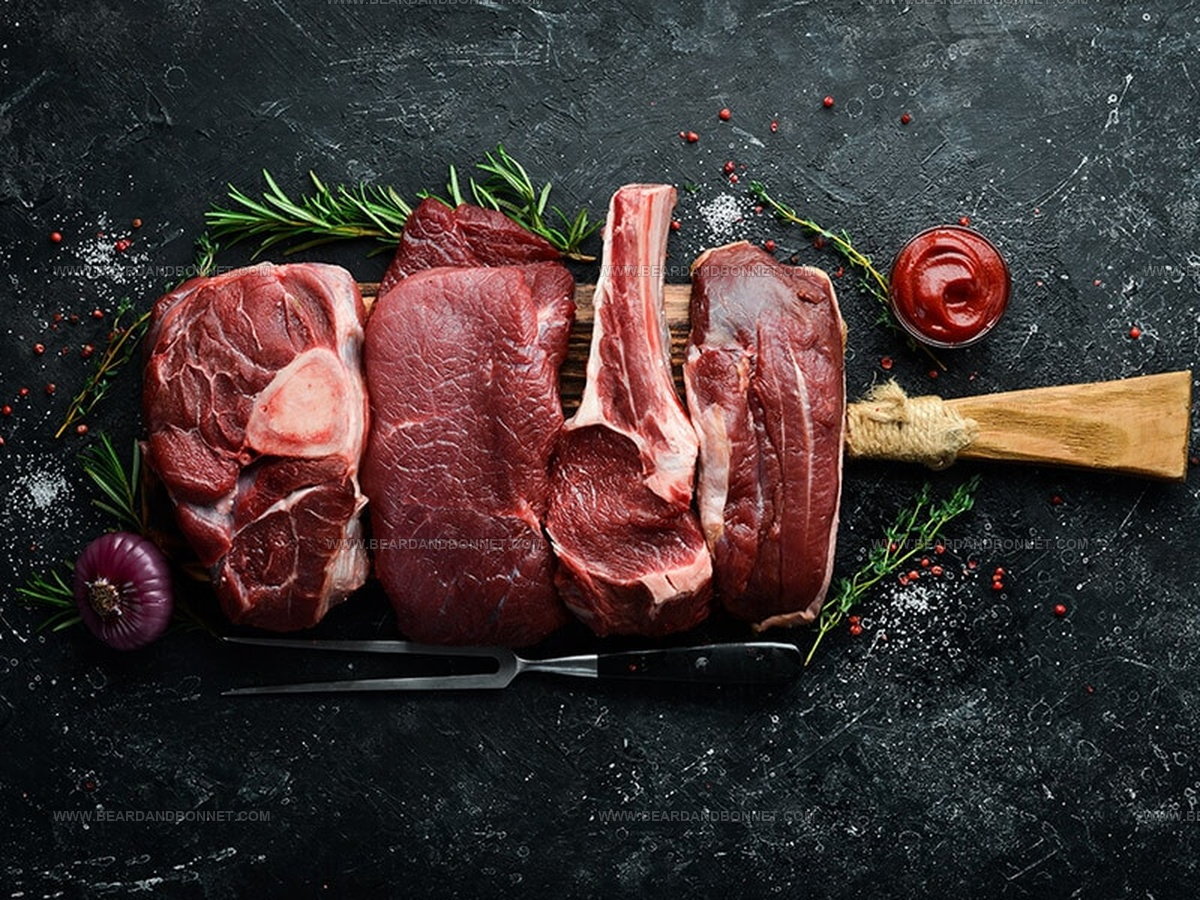
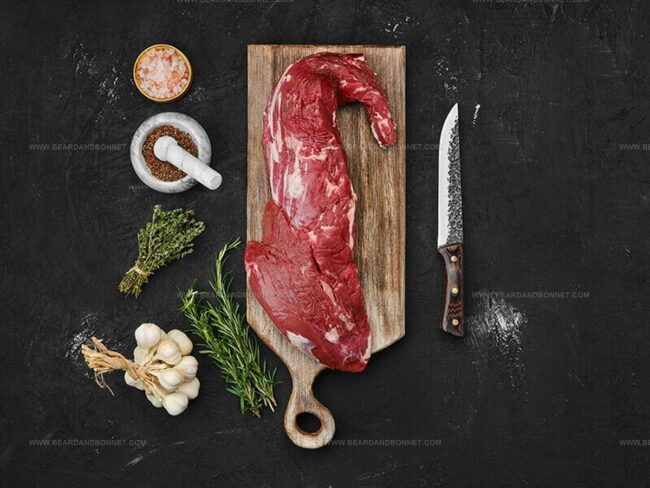
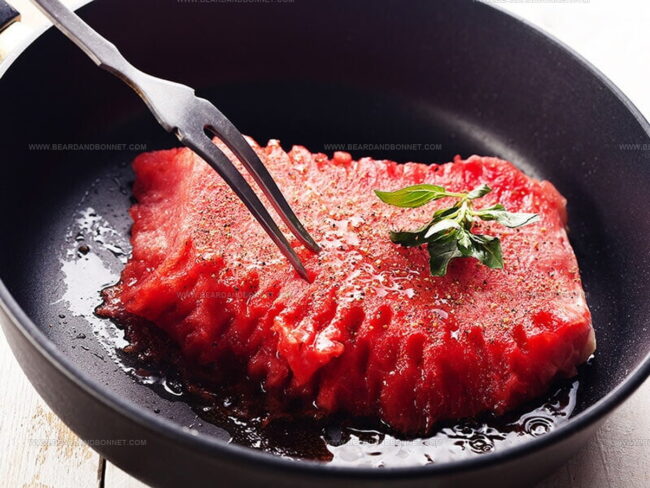
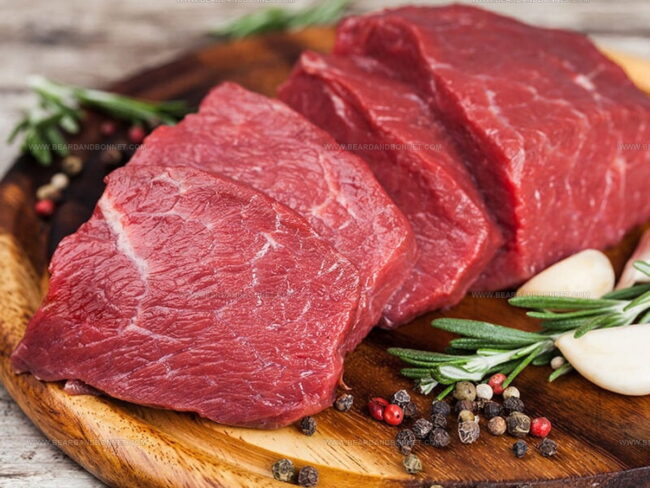
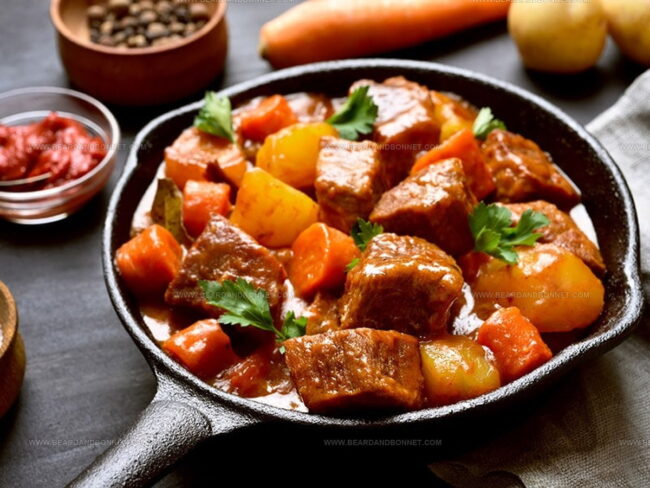
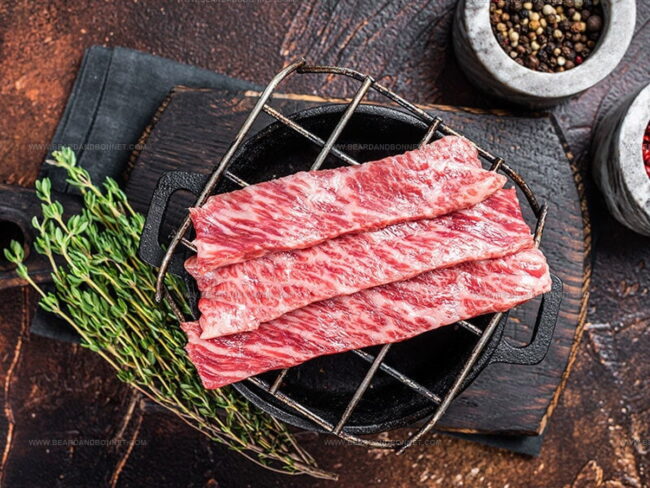
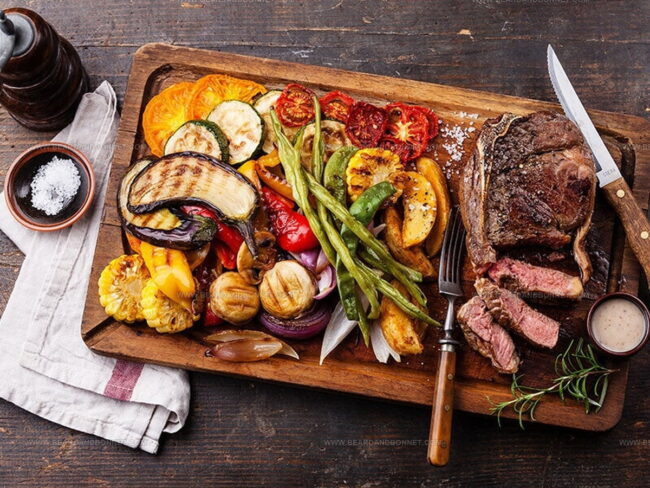
Jessica Martin
Recipe Developer & Food Writer
Expertise
Recipe Development, Food Styling and Photography, Seasonal and Local Ingredients, Vegetarian and Vegan Cuisine, Culinary Education
Education
Portland Community College
Oregon Culinary Institute
Jessica Martin is a talented food writer and recipe creator who specializes in seasonal cooking and approachable home baking.
Educated at Portland Community College with additional pastry training from Oregon Culinary Institute, Jessica’s culinary journey spans nearly a decade of creating and sharing flavorful recipes.
Her deep appreciation for local ingredients shapes each of her recipes, making them both accessible and inspiring. At Beard and Bonnet, Jessica uses her cheerful, down-to-earth writing to help readers effortlessly bring new tastes and creative dishes into their daily routines.